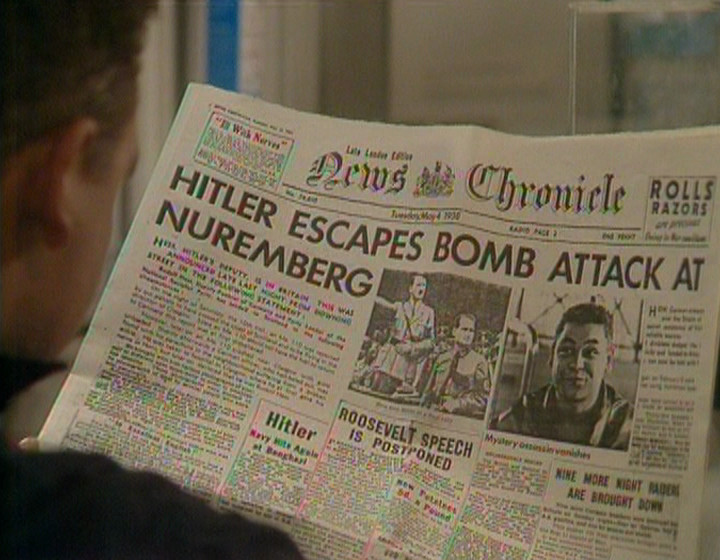Content warning: sexual assault, but no graphic details.
Yesterday’s article about Smashie and Nicey: The End of an Era brought up a problem that I have to contend with every so often. And that problem is: how to deal when a real, horrible thing suddenly intrudes on the silly kind of nonsense I usually write about on here. In yesterday’s case, what was supposed to be a shaggy dog story finding out how a production team adapted a newspaper, turned into a story about a 21-year-old woman being brutally stabbed to death by her husband.
When writing the piece, I had to figure out how to tackle that. Did it make the article inappropriate to publish? Did it at the very least require a warning? In the end, I decided no to both. The story is shocking, but was also ultimately quite short, with no gruesome detail beyond mentioning “multiple stab wounds”. Being over-sensitive can be just as awkward as not considering things enough. I decided to let it stand as it was, and while the piece does actually end as a joke, it’s a joke that acknowledges the awkwardness and hopefully puts everybody on the same page. A joke with a point.
But it did remind me of another issue I had a few years back. It’s something I never wrote about at the time; there is no way of discussing the actual case in question, for reasons that will become apparent. But a conversation on Twitter reminded me of it, and I think it’s an interesting thing to discuss in terms of the problems you can easily run into with examining old telly. So let’s try to examine it… without actually linking to the video in question.
Because this is a case of jigsaw identification.
The video I wanted to write about was a news bulletin. It was a news bulletin with something particularly interesting about its production, which is why I wanted to write about it; the actual news stories were mostly irrelevant to my point. But throughout the bulletin, there was a story about a woman who had been abducted, and then rescued. There was plenty of information given about the abduction: the woman’s name, place names, and the details of how it ended. It’s very, very easy to research what happened with this story after this news bulletin aired.
And when you do that, the woman’s name – so prominent in the bulletin – disappears. And it disappears for a very obvious reason: because she was raped during her abduction. This fact isn’t mentioned during the news broadcast – as much as anything else, it’s too soon for that information to come to light. But once it did, and the rape itself is reported, the woman’s name is entirely excised.
When I found all this out at the time, I was horrified that I’d managed to piece this together. These days, perhaps I’m a little less shocked; given that part of what I do on here is to drag out obscure things, I guess it’s not a surprise that I’d accidentally touch on stuff like this. But it’s a reminder of how easy jigsaw identification is, and you don’t have to be a journalist writing about current criminal cases to mean you have to be careful about it. You can run into these issues even just writing stupid things about old TV.
It’s also a reminder that we’re really not supposed to be able to see that bulletin, here in 2022. It was meant to be watched at that particular moment in time. I’m not saying it shouldn’t have been uploaded; far from it, in fact. But the intent with that piece of reporting was not that any random person would be able to see it in 2022.
There are historic videos and articles like these everywhere online. They’re not intentionally doing anything untoward. But you can piece together all kinds of things using them that you really shouldn’t be able to. I’m not sure there’s an easy solution; any potential “fix” could create a problem ten times worse.
But it’s why, even when writing about old telly… you have to be aware of certain things you might not expect to have to deal with.


